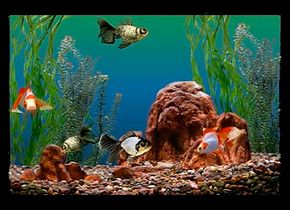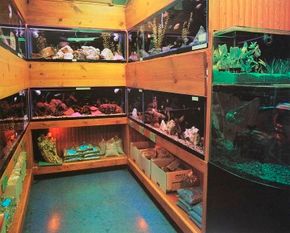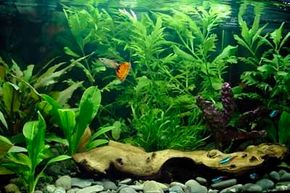A visit to any large aquarium or pet store will reveal an astonishing variety of fish -- a couple hundred species or more. Of these many possibilities, only some are suitable for new aquarists.
Never purchase fish without knowing enough about them to determine how well they are likely to do in your particular aquarium. Often, hobbyists find themselves leaving a pet store with a fish that they just couldn't pass up without having any idea what it eats, how large it gets, or if it has any unusual care requirements. While it is always fun to acquire a new fish, doing it haphazardly can be disastrous and costly.
Advertisement
When choosing fish, there are a number of factors to consider. For example, fish that are found only in very specific habitat conditions are not going to do as well in an aquarium that differs much from their natural environment. Species that have adapted to a wide variety of conditions in nature tend to be the hardiest fish in an aquarium.
Your fish also need to be compatible with each other. Just about every new aquarist starts out by keeping a community aquarium containing a variety of fish that differ in size, shape, and color. Often, the fish in such a tank originate from different parts of the world and have adapted to different water conditions. Their behavior patterns and food preferences may also differ.
This means that even if all of the fish are hardy, if they are not compatible, there will be difficulties. Compatibility is essential to success within a community setting.
Compatibility is generally assumed to mean that the fish get along. In other words, the fish are peaceful and do not harass one another. Fish that are subjected to harassment on a continual basis are under so much physical stress that they are far more likely to become sick, no matter how good the water quality is.
As important as this basic compatibility is, however, your fish need to be compatible in other ways, too.
If the fish prefer very different water conditions -- some doing best in hard, alkaline water and others doing better in soft, acid water -- you will not be able to provide the best environment for all of them. The fish least compatible with your aquarium water chemistry may not grow as large or exhibit their best color.
Behavior patterns are also important. Fast-swimming fish will disturb and upset fish that swim slowly. Fish that are aggressive swimmers will often take more than their fair share of food at feeding time. The more timid species will hold back and thus get little to eat.
Adding more food to compensate only increases the problem of uneaten food in the tank, making it more difficult to maintain good water quality.
Behavior differences can be very disruptive. Even when fish have peaceful dispositions, conflicts can still arise among them in the tank. Fish that are territorial will keep other species from entering their area, limiting the amount of space for all the others.
If there aren't enough hiding places, more dominant fish will maintain control of the few that do exist in the tank.
Get more helpful hints on choosing aquarium fish on the next page.
To learn more about freshwater aquariums, see:
Advertisement




